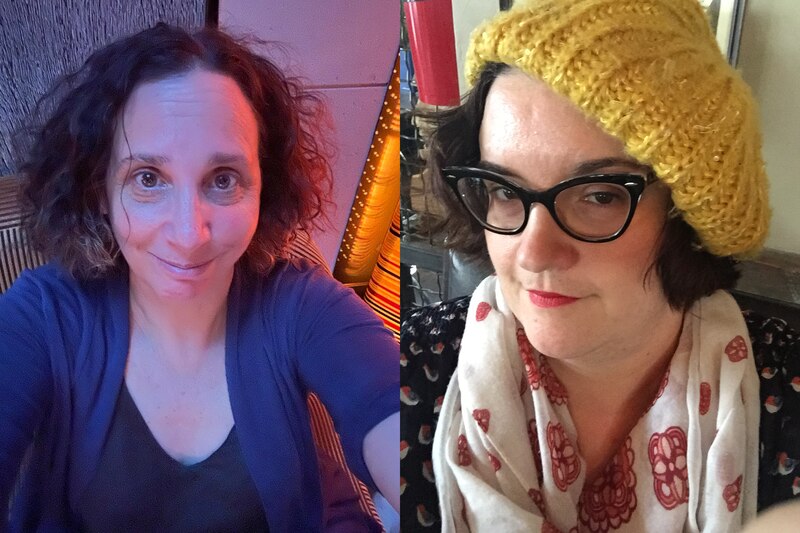Sign up for Chalkbeat New York’s free daily newsletter to keep up with NYC’s public schools.
A few years ago, on a visit to our shared campus library, a wonderful high school teacher we know was there with one of his classes. Asked what his students were doing in the library, he replied “Just reading.”
Giving kids the time and space to read books of their choosing during the school day shouldn’t be a radical act. But it can feel like one. Teachers wonder: What if students aren’t reading? How do I grade reading? Would this time be better spent preparing them for an upcoming assessment?
Despite competing pressures, we — Lauren, a high school English teacher, and Marie, a campus librarian — have created and are piloting a reading program, called “Just Read.” The simple premise behind this effort: All students should have the right to read books for enjoyment. The goals: Make reading a habit and increase reading stamina.

When we started “Just Read” during the 2018-19 school year, our students logged their pages and reflected on their experience. Most of them admitted to getting distracted, missing their phones, and feeling restless. However, many also reported enjoying choosing books and diving into a story.
We challenged them to read for five minutes without stopping or without allowing their mind to wander. We dare you, dear reader, give it a try. In the smartphone era, most of us — and not just digital natives like our students — have lost this skill. These days, it takes training.
During “Just Read,” we didn’t dictate what books students could read. Since many of our students love Manga, we allowed them to read comic books and graphic novels. They are reading. Any well-crafted story that helps a student understand what it means to be human is worth reading. Yes, students should be exposed to great literature, but if we don’t encourage and create spaces for students to choose their own books, and allow them to read in a safe and quiet environment, how can we expect them to read books that are more challenging?
Consistent with the goals we set for stamina, students in Lauren’s class moved from two minutes of focused reading to 10 minutes over the course of eight months. And last school year, the third year of the pilot, which we didn’t run during COVID, we tried to add more student accountability. In addition to tracking pages read, we asked them to complete reading logs. Students spent the entire 45 minutes in the library, choosing books, building stamina, reflecting on their reading and focus, and discussing their books with peers.
We also asked students to try to “sell” their book selections to their peers by creating book trailers, book talks, or mood boards. Yusei Matsui’s “Assasination Classroom,” a graphic novel in which the teacher is not human, was a popular choice among the students. Another student took on Joseph Heller’s “Catch-22” and used a free animation program to make his book trailer, which enticed two other students to give the famous World War II-era novel a try.
[I]f we don’t encourage and create spaces for students to choose their own books … how can we expect them to read books that are more challenging?
Ms. Southwell created a visual catalog of recommendations for students — suggesting such books as “Scythe” by Neal Shusterman, “The Handmaid’s Tale” by Margaret Atwood, selections on personal finance and entrepreneurship, and, of course, the latest hot graphic novel series. We asked students to stay with their book selection for at least 30 pages; after that, if it didn’t hold their interest, they could move on to another book.
The most amazing piece of data is the number of student visits: During the 2022-23 school year, the shared campus library had over 10,000 student visits — up from about 900 student visits the previous school year. Library circulation rose to 5,500 books, up from 3,000 books the school year prior.
This program hasn’t changed struggling readers into bibliophiles. Some kids didn’t read during the allotted time. There were those who took copious bathroom and water breaks to avoid the assignment and those who tried to use their phones instead of reading. We will tweak this reading program again this school year.
We are reaching out to other teachers in the building, encouraging them to adopt the program and help us make it better. And this past summer, in an effort to promote continuity and accountability, Lauren’s students had to read a book and complete a book trailer to be reviewed by their new ELA teacher.
Ultimately, we want schools and districts to mandate library time in high schools the way they encourage independent reading time in elementary schools. (We know that not every school has a library, but this program can take place in classrooms, too.) We know that benchmarks and tests are important for monitoring students’ reading ability. But if reading is constantly a chore and not a source of joy, it’s hardly surprising when students aren’t interested in picking up a book. Reading for pleasure is every child’s right.
Lauren Davenport is a proud public educator and writer in New York City. Her two children, ages 15 and 12, also attend New York City Public Schools.
Marie Southwell is a teacher librarian in New York City Public Schools and has been an educator for over 30 years. When not reading or drinking coffee, she is throwing the ball for her dog, Tobi Wan Kenobi.



